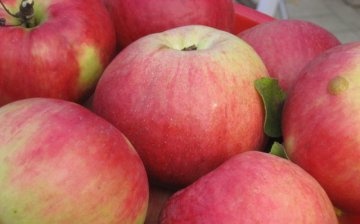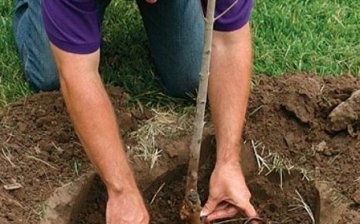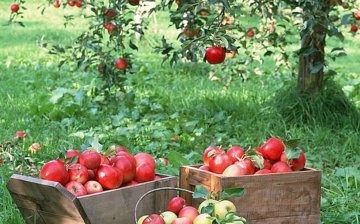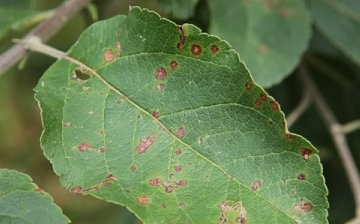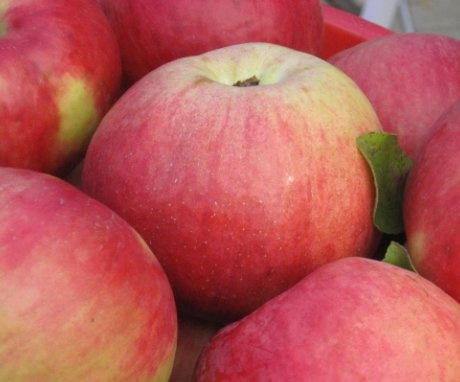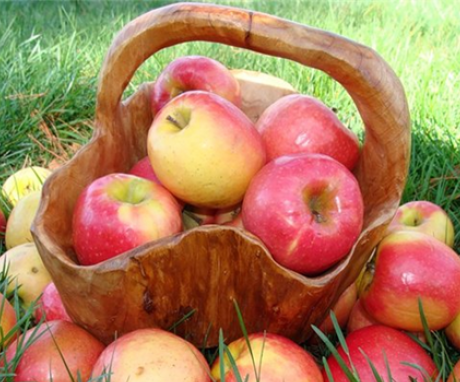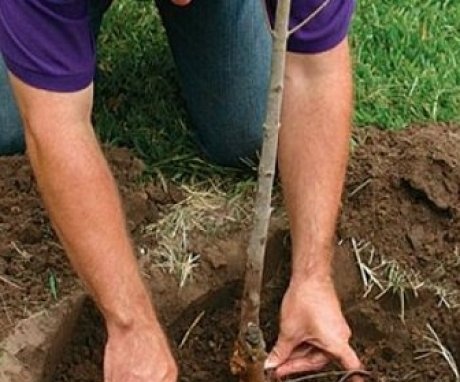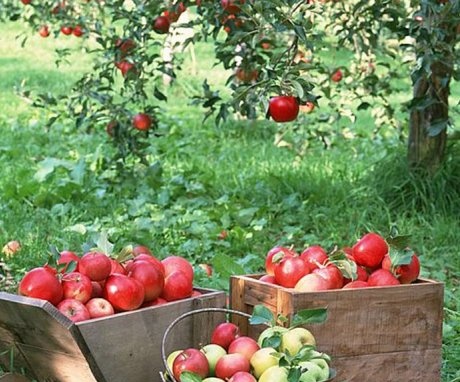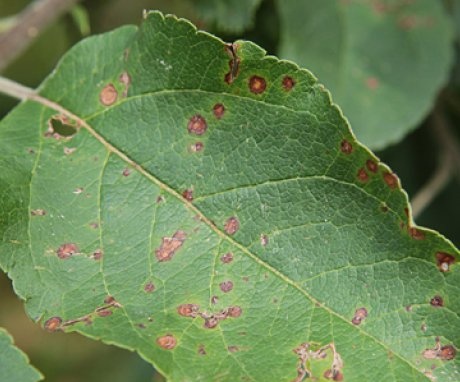North Sinup is the best apple variety to grow in the garden
In pre-revolutionary times, the famous Crimean Sinap apples were delivered to the table of Russian aristocrats - a variety that has excellent taste, but is absolutely not frost-resistant. IV Michurin set the task of developing a variety that is not inferior to the Crimean Sinap in taste and is able to withstand the frosts of central Russia. The result of many years of experiments was the Northern Sinap variety, the creator of which is considered to be S.I. Isaev.
Content:
- Description of the apple variety North Sinap
- Advantages and disadvantages of the variety
- Planting a seedling
- Apple tree care
- Diseases and pests
Description of the North Sinap apple variety
Late winter - apple ripens after 2-3 months storage... The North Sinap apple variety is a large, vigorous tree with a wide, medium-dense crown tapering towards the top. The apple tree has several strong skeletal branches and a large number of thin side shoots. The bark of the branches of the first three orders of the trunk is gray.
Fruiting at the North Sinap is of a mixed type - from fetuses to skeletal growths. When grown in a nursery, the branches of seedlings are painted in cherry color with a gray tint, lentils (formed on the shoots and perform the function of gas exchange) are small, white. The leaves are shiny, dark green with a gray tint, elongated ovoid, wide. Short petioles grow at an acute angle to the leaves. The flowers are large with pink leaves.
The apples are medium-sized, conical or cup-shaped, yellowish-greenish in color with a brownish-red blush.
Light-colored subcutaneous spots are visible on the peel. Fruit weight from 95 to 150 grams. The taste of the North Sinap is sweet and sour, with a spicy aftertaste, refreshing, juicy apples. Fruit ripening period - early October and later. The variety is characterized by medium resistance to drought and such diseaseslike a scab and powdery mildew... It grows well in the Central Black Earth, Lower Volga, Middle Volga regions.
Advantages and disadvantages of the variety
The North Sinap variety is considered by many gardeners to be the king of the Russian garden. Indeed, despite the exactingness to care, the North Synap has a lot of advantages:
- Fruits keep well: until early June.
- Fruit Apple tree starts 5th - 8th year after disembarkation in open ground, on the dwarf rootstock - even in the second year.
- High yield: up to 170 kg of fruit can be harvested from a fifteen-year-old tree.
- Good winter hardiness.
The disadvantages of the variety include the following:
- For a good ripening of apples, a very warm summer is needed. For the appearance of a beautiful blush by the warm summer, autumn should also be with fluctuations in night and day temperatures.
- It is not recommended to pick unripe apples: they have worse taste and are poorly stored.
- The Northern Sinup requires constant care, otherwise the yield falls, the fruits become smaller, their taste deteriorates.
- Large trees.
- In especially fruitful years, the quality of the fruit decreases.
- Late ripening period.
- After harvesting, apples should lie down for 2-3 months to gain flavor.
Planting a seedling
The North Synap loves a lot of light and space, so it should be planted in open areas away from tall, large trees. Air-permeable loamy and super-sandy soils with an acidity level of pH 5.6 - 6.0 are well suited for apple trees. Groundwater should be at least two meters above the ground surface. If the groundwater is close to the roots, the apple tree may die.
The North Synap is planted in September-October or in the spring.
15-30 days before planting, you need to prepare the landing pit:
- The pit is 80 cm wide and 100 cm deep.
- Remove the sod.
- Remove the humus layer - set aside.
- Remove the infertile layer - set it aside.
- Loosen the bottom of the pit.
- Lay drainage at the bottom.
- Lay the turf layer upside down.
- Mix the humus layer with ash, rotted manure, compost and mineral fertilizers (potassium sulfate - 40 grams, superphosphate - 80 grams).
- Fill the pit by 30% with the resulting mixture.
- Top up the remaining fertile layer so that a mound 20 centimeters high is formed.
When following simple recommendations for landing technology seedlings, the North Synap apple tree will take root well:
- Cut off the damaged ends of the seedling roots.
- Soak the roots in water for two to three hours, if the roots are very dry, soak in water for a day.
- Dig a hole in the hole, the size corresponding to the root system of the apple tree.
- Form a small mound in the hole.
- Drive in a peg 80 centimeters high above the soil surface.
- Place the apple tree on a knoll on the north side of the peg so that the root collar rises 6 centimeters above the ground.
- Spread the roots.
- Cover the roots with earth, slightly compacting the soil.
- Tie the tree to the peg with a cloth.
- Water until water goes into the soil.
- Mulch the land around the apple tree with humus or peat.
- The optimal planting scheme for the North Sinap apple tree is 7 x 7 m.
Apple tree care
Apple tree North synap requires regular maintenance. To get good harvest you need to follow the rules for pruning, watering and feeding. Water the North Sinap once a week, 30-40 liters per tree. During bud formation and fruit ripening, sufficient watering extremely important. You can dig grooves around the tree and carry out watering Through them. In hot weather, it is recommended to take a shower for the apple tree. Wet soil must be loosened and removed weeds.
The North Sinap apple tree is a fast-growing tree, therefore, to get a good harvest, you need to carry out the pruning procedure in a timely manner:
- Pruning do in the spring.
- Since the North Synap is a late variety, the first pruning is carried out at planting - the shoots must be shortened by a third.
- At the two-year-old North Sinup, pruning is done so that 3 tiers of shoots remain. On each tier, you need to choose the strongest shoots, remove the rest.
- In the first year, the shoots are cut by about 40 centimeters, then by 20 centimeters.
- It is imperative to remove dry, weak and diseased shoots and make sure that the apple tree has one guide. To avoid diseases wood, process the places of cuts.
If the North Sinup apple tree is grown in fertile soil, it practically does not require feeding: it is enough to apply humus and mineral fertilizers once a season, containing nitrate, nitrogen, phosphorus, boron. To protect against frost, 14 days after flowering, add a 5% urea solution to the soil, and again after seven days, adding potassium chloride.
In order for the crop to last longer, the North Sinup needs to be fed with calcium salts regularly throughout the season with an interval of half a month.
Although the North Synap is a frost-resistant variety, protection does not hurt: for the winter, insulate the near-stem circle with a layer of peat and humus. This will help prevent soil freezing. Wrapping the tree with spruce branches will help scare off rodents.
Diseases and pests
The North Synap apple tree is characterized by moderate disease resistance and pests... Therefore, it is important to carry out prophylaxis in order to prevent damage by insects and fungi:
- In the spring, remove all weak, dry, and diseased shoots.
- Be sure to treat the cuts with special means (for example, garden pitch).
- Treat the tree and the near-trunk zone with pest preparations.
Most of the fungal diseases fruit trees are successfully treated with Strobi drug, which is used in combination with other means.
More information can be found in the video




